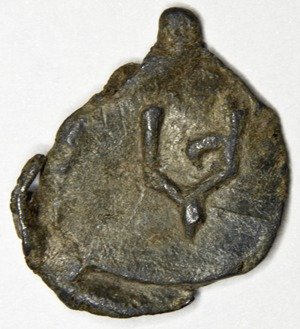The trident wasn't the first symbol: a historian shares insights about the princely emblems of the Kyiv dynasty.
The princely symbols of the Kyiv dynasty have become one of the most fascinating topics in Ukraine's history, reflecting the cultural and political heritage of medieval Rus. These symbols, which were used to mark the boundaries of estates, brand livestock, as well as on household and jewelry items, became important emblems of princely authority.
In 1918, the symbol of Volodymyr the Great was adopted as the basis for the coat of arms of Ukraine. Historian Alexander Alferov shared intriguing information about this on his social media page.
Origin and Evolution of the Symbols
The system of princely symbols began to actively develop in the 10th century. It included various symbols such as the trident, the double-pronged fork, and other unique forms. These symbols held not only practical but also symbolic significance, as each prince inherited his father's symbol, modifying it to distinguish his own property.
 1
1  2
2  3
3  4
4  5
5
The first known princely symbol is considered to be the double-pronged fork of Sviatoslav Igorevych. This symbol laid the foundation for the further development of the system of princely symbols, which today encompasses several hundred variations. Subsequently, these symbols transformed into coats of arms for princely families such as the Ostroh, Vyshnevetsky, and Chetvertynsky.
Use of Symbols
Princely symbols were used on coins, seals, and other items. They had an individual character and were not family symbols, although some branches of the Rurik dynasty had their own dynastic symbols. Symbols often changed depending on fashion or the material they were applied to, but their basic form always remained unchanged.
Legacy of the Symbols
The symbols of the Kyiv dynasty continued to exist in new forms. For example, the symbol of Volodymyr the Great became the basis for the modern coat of arms of Ukraine in 1918. This indicates that princely symbols not only reflected the past but also became a part of contemporary national identity. The princely symbols of the Kyiv dynasty are an important element of Ukrainian history and culture, showcasing the evolution of society from medieval times to the present.
Previously, "Telegraph" reported that Russian tsars repeatedly wanted to move the capital to Kyiv. The historian shared interesting details.